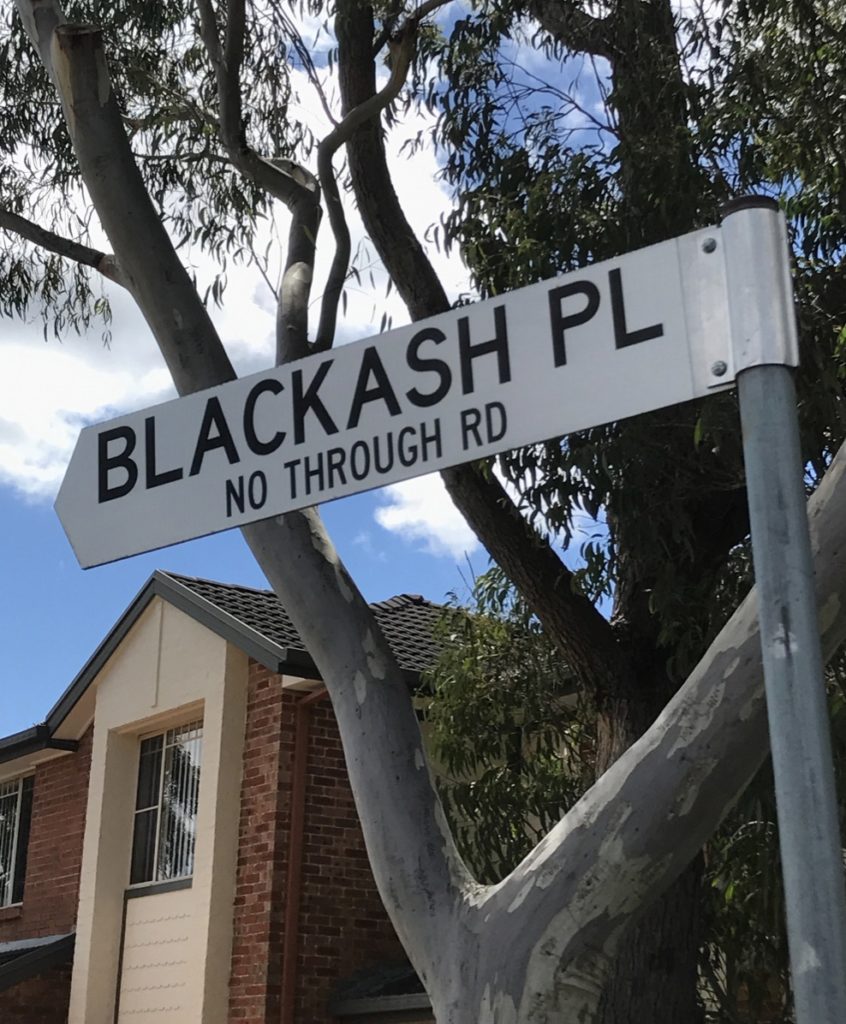We are surrounded by clues to our past. As we design communities, planners give a nod to people, places or significant events that shape or give rise to that form. Examples might be “The Broadway” for a wide boulevard, “Scribbly Gum Crescent” for an area that was once dominated by the twisted form of this iconic Eucalyptus.

Lessons from our past. Taking heed of what has gone before us. Blackash Place paints a picture of past significant bushfires running through a place where houses now stand
Place names are an important nod to our past and in some cases a pathway to our future.
We just need to be aware of our surrounds. I was in northern Sydney after some recent bushfires and went past the namesake of the company – Blackash Place. It strikes me today, the same as it did nearly 20 years ago, (the first time I saw it) that there are lessons to be learnt and warnings to heed.
Blackash Place is no different from many legacy (existing) developments on the urban/ bushland or urban rural interface. It sits on top of a narrow ridge facing the north west, it has continuous bushland adjoining it, the dry sandstone forest vegetation sits on long, steep slopes that are inaccessible. Blackash Pl joins into a spine road that runs along the ridge with bottlenecks and pinch points. The sheer number of people living in the catchment will make mass movement of along it problematic at best. Bushfires are a part of its history and regular visitor to its future.
It was designed and developed in a time when bushfire was understood as an inevitable part of the Australian landscape as something that needed to be tamed. Risk management was minimal and development proceeded in areas that today, we cringe at. Strangely, at the time the plans were being drawn up for this development there must have been evidence of recent fire – hence the nod to past experiences.
It begs the simple question… based on evidence of a significant fire affecting the area, why would the development have proceeded?
Arrogance, over confidence and the innate belief that we can tame mother nature have time and again resulted in tragedy and high impact/ high consequence bushfires tearing through old communities that do not have innate bushfire protection built into them.
Thankfully, modern planning has learnt, through bitter experience that our development needs to take account of natural hazards and design out communities accordingly. A balance must be struck between the need to utilise land as our cities expand, finding a reasonable Lot yield in areas that can meet modern planning and building requirements and finding the tolerable level of risk we as a community are prepared to accept.






